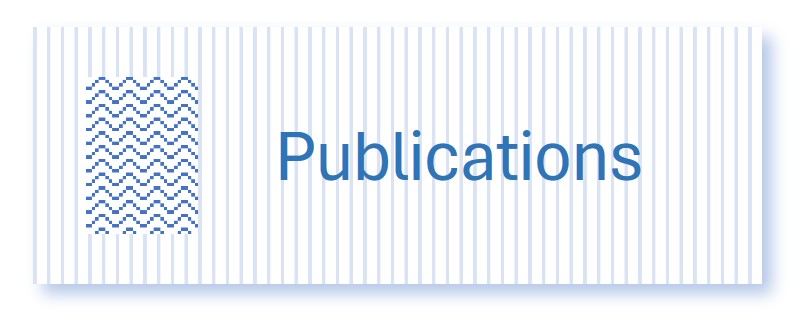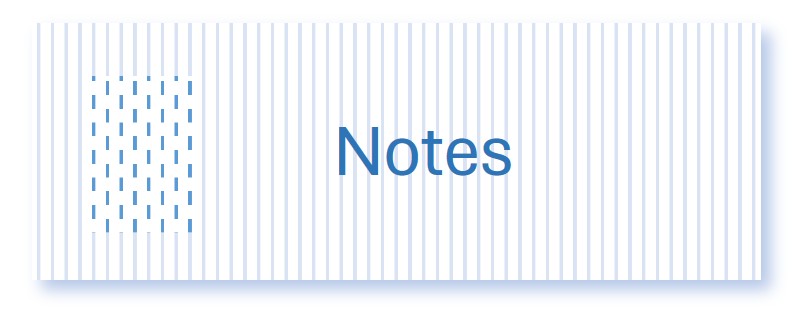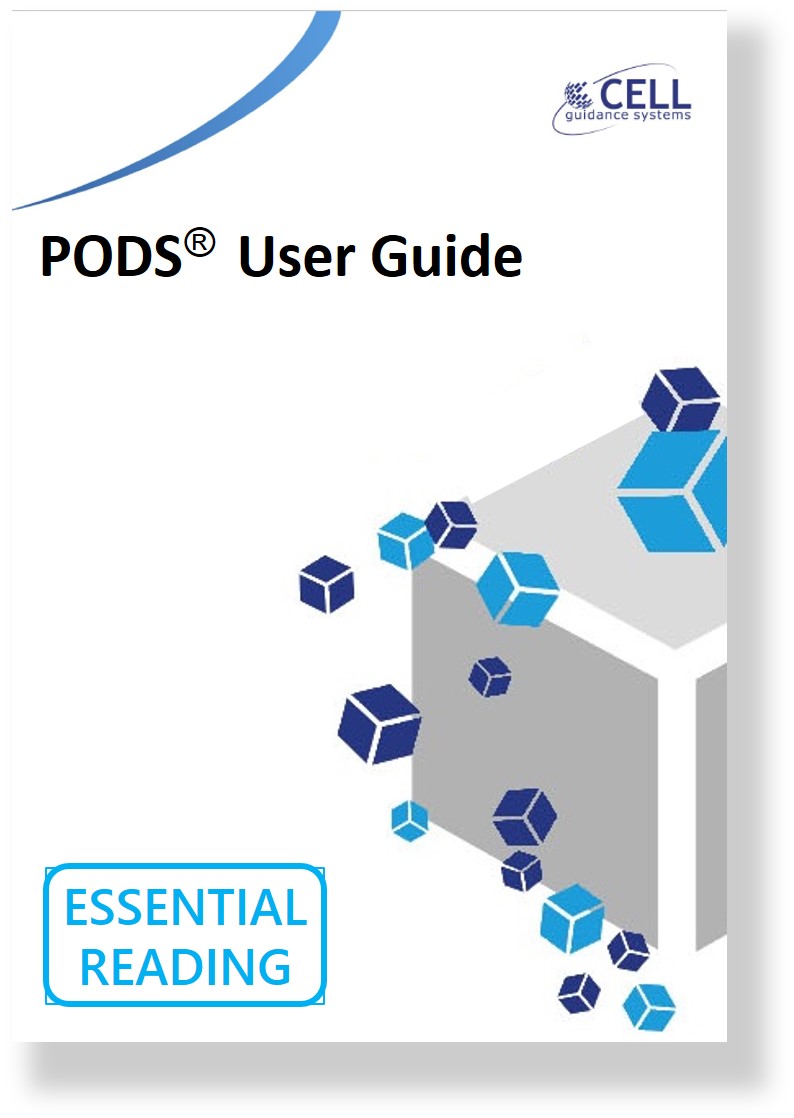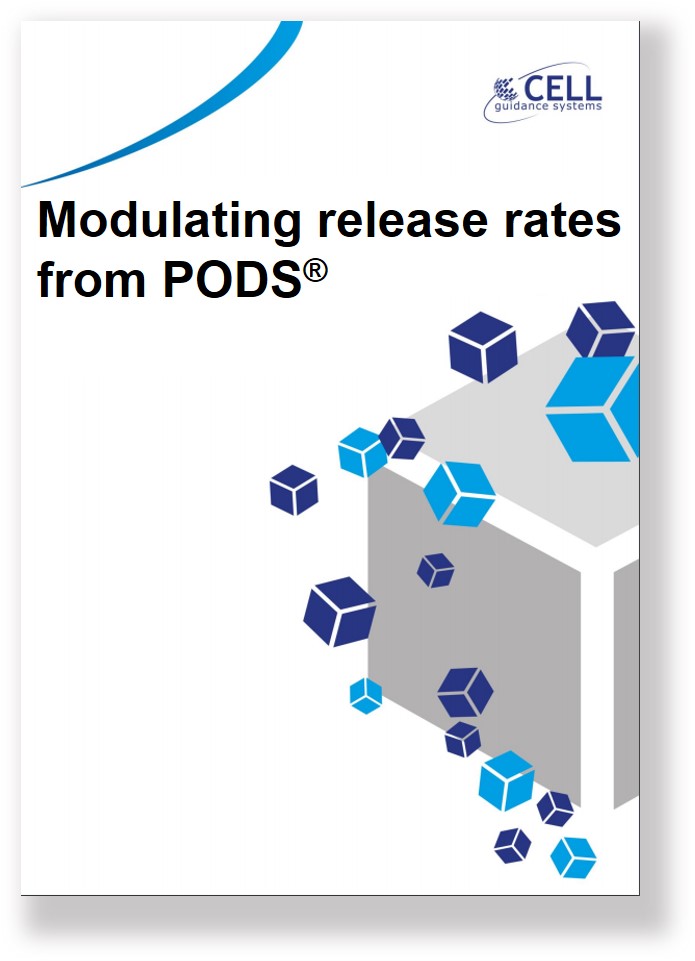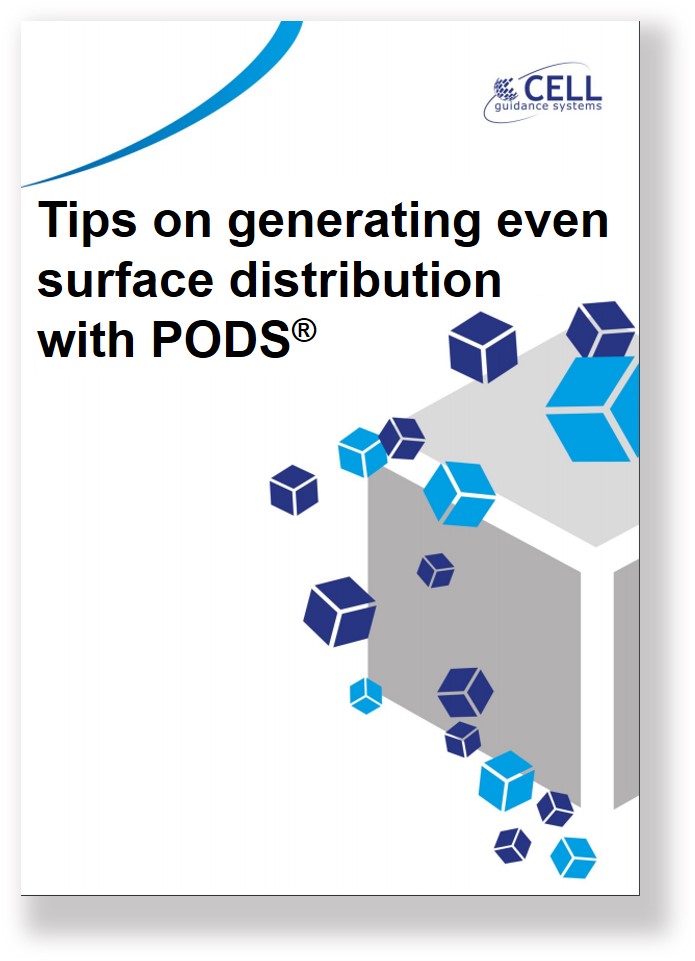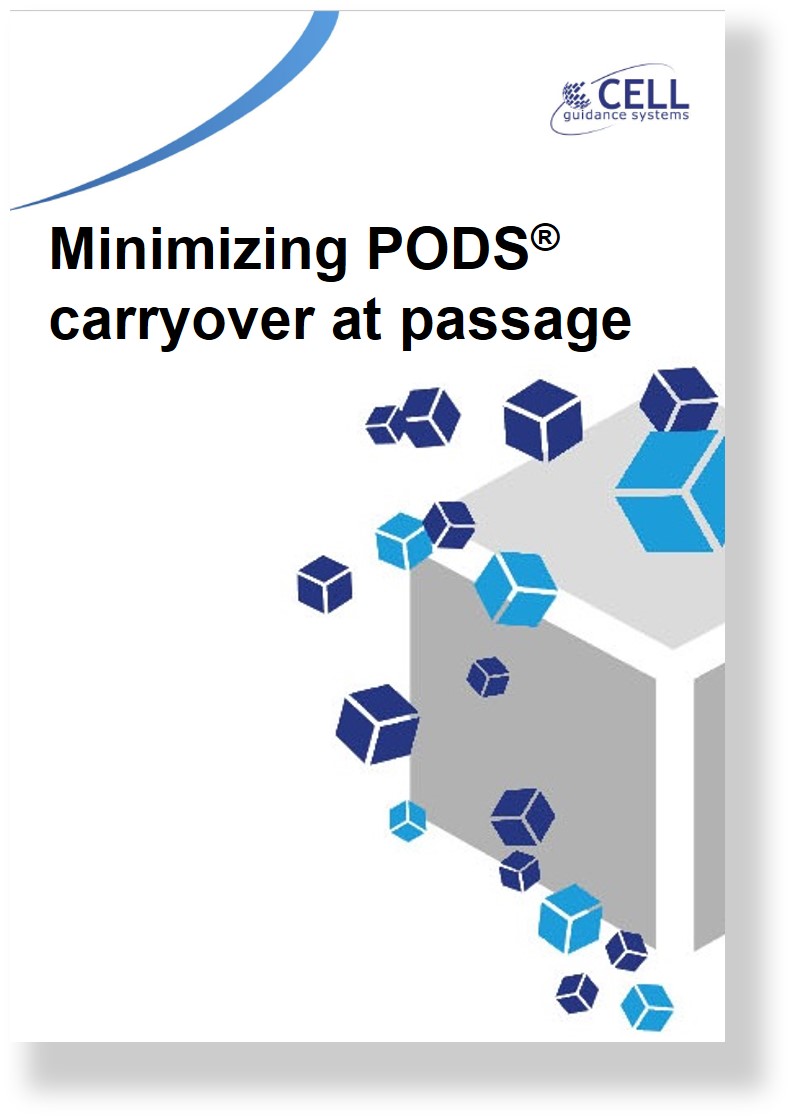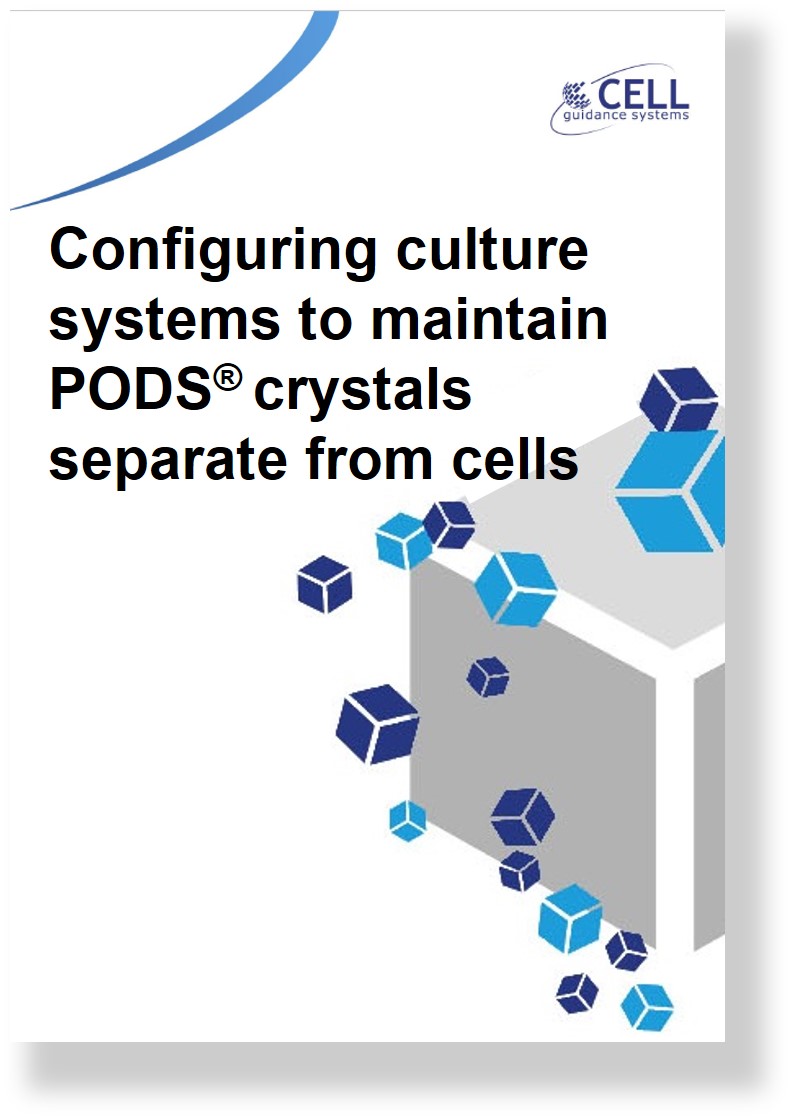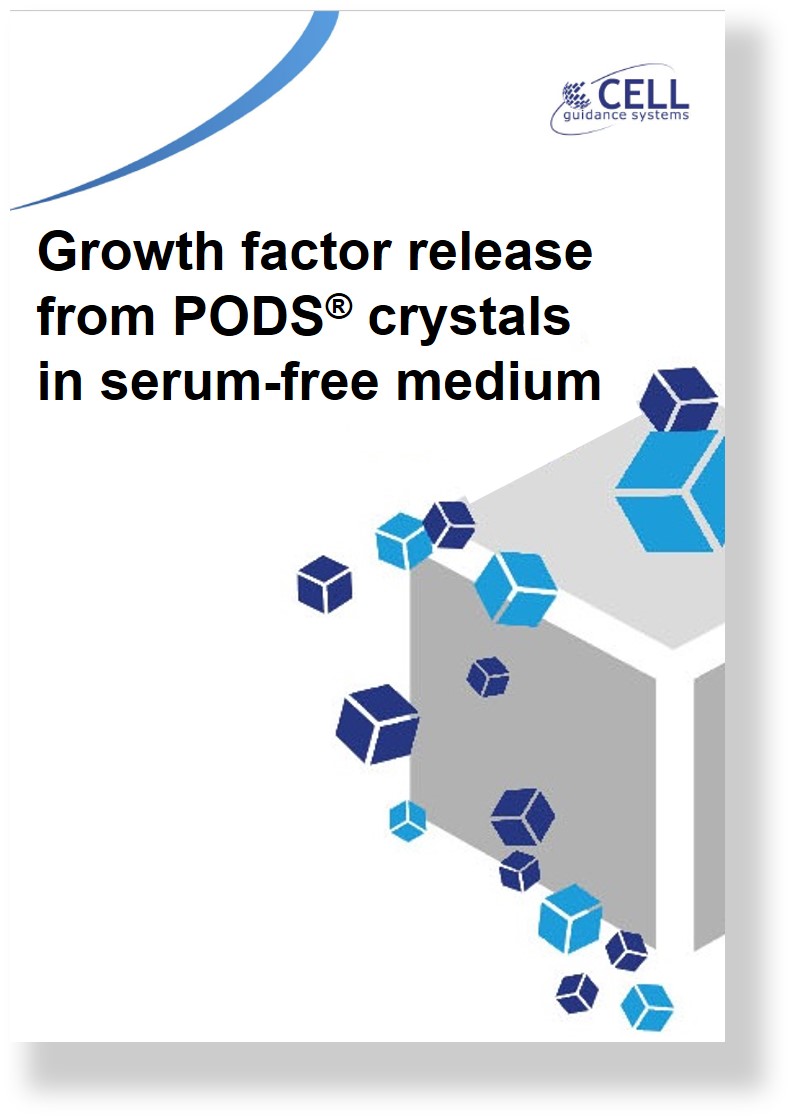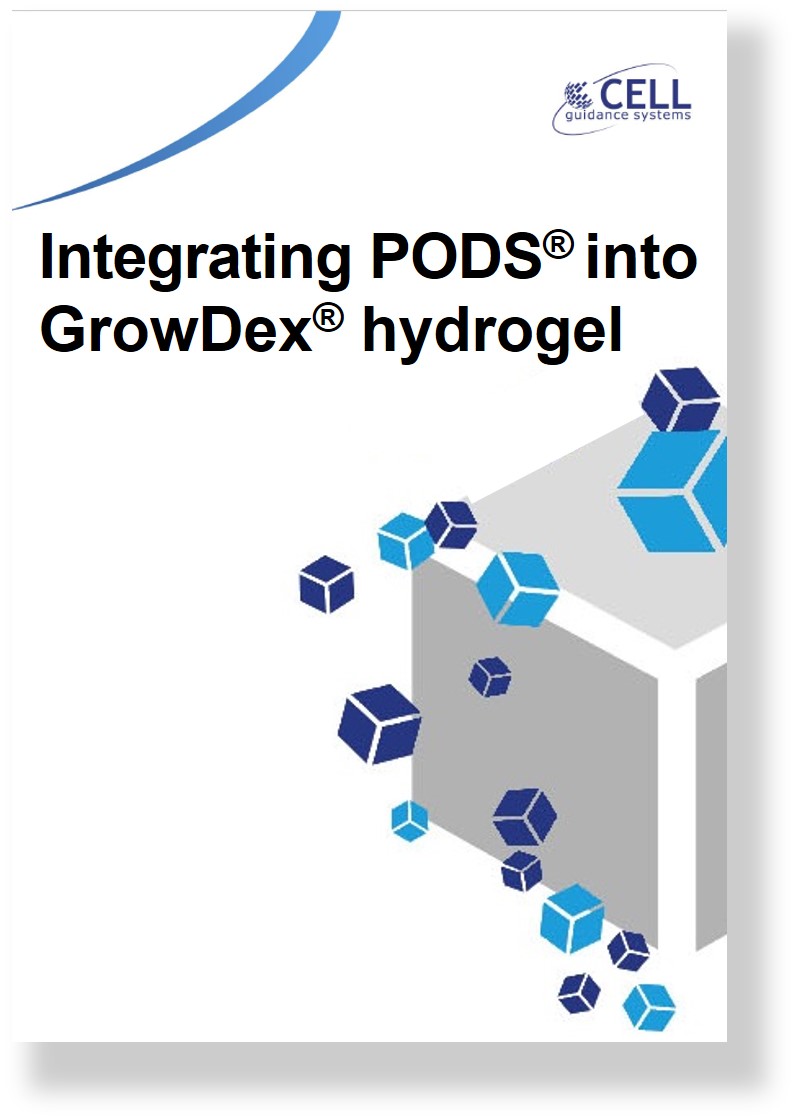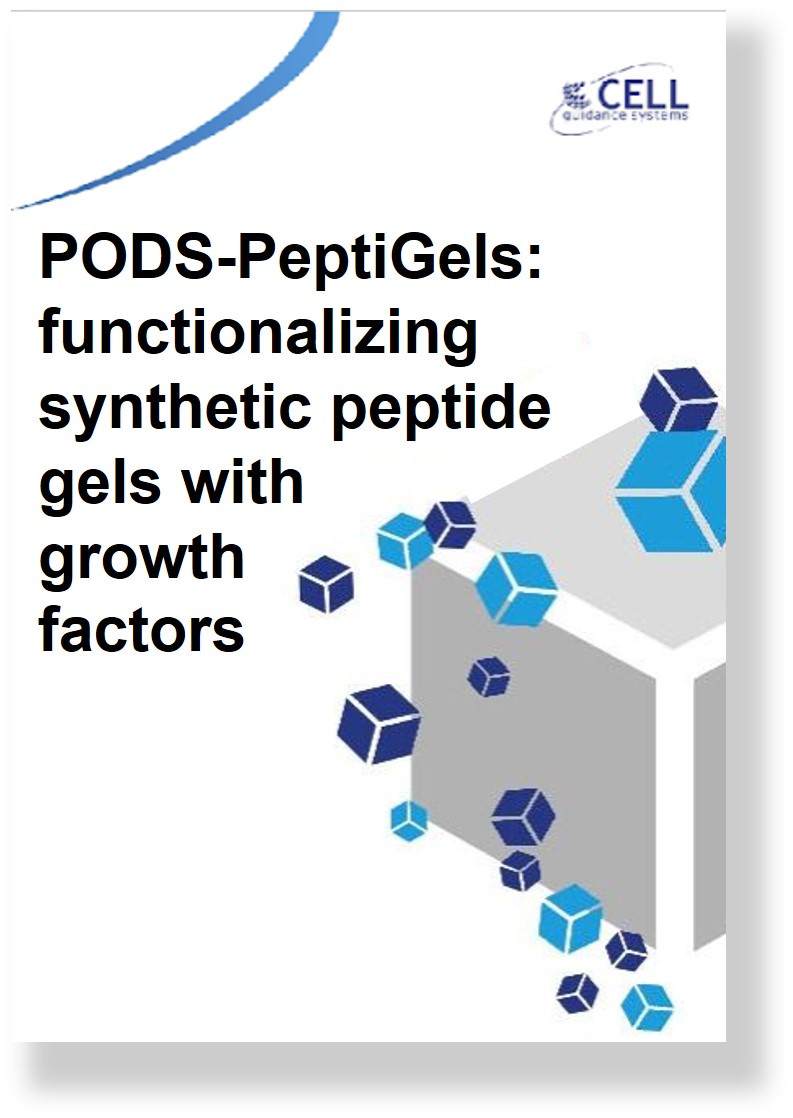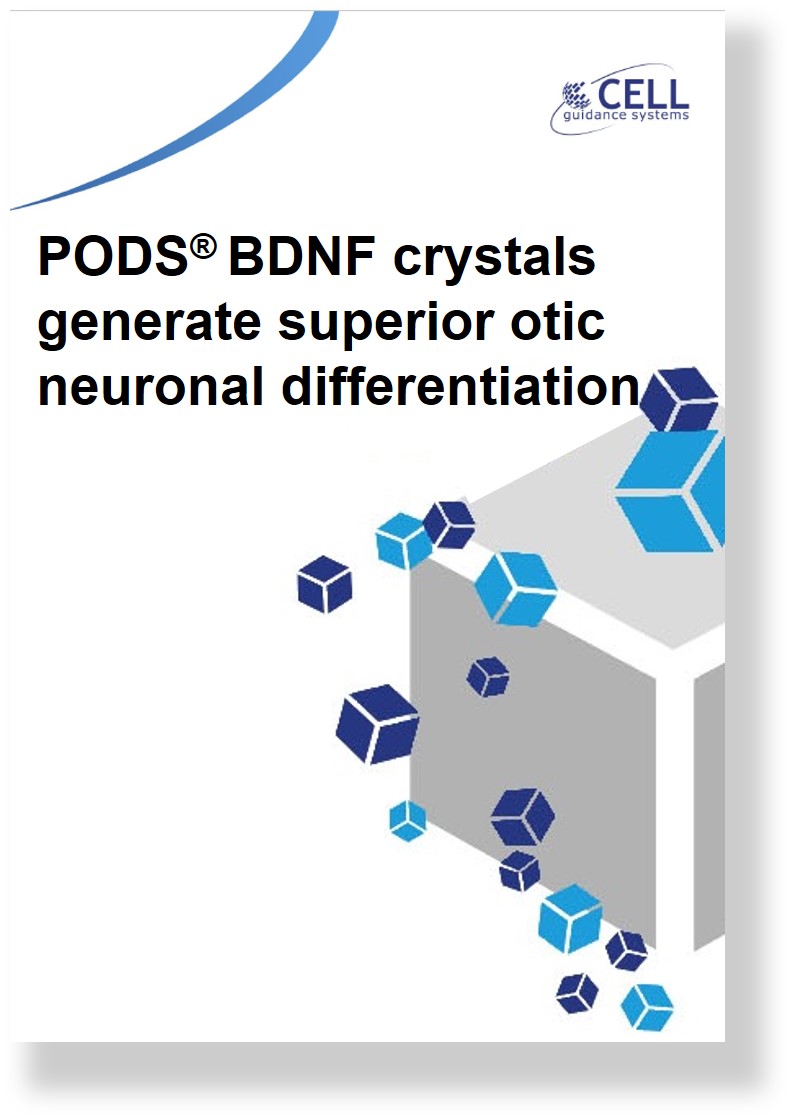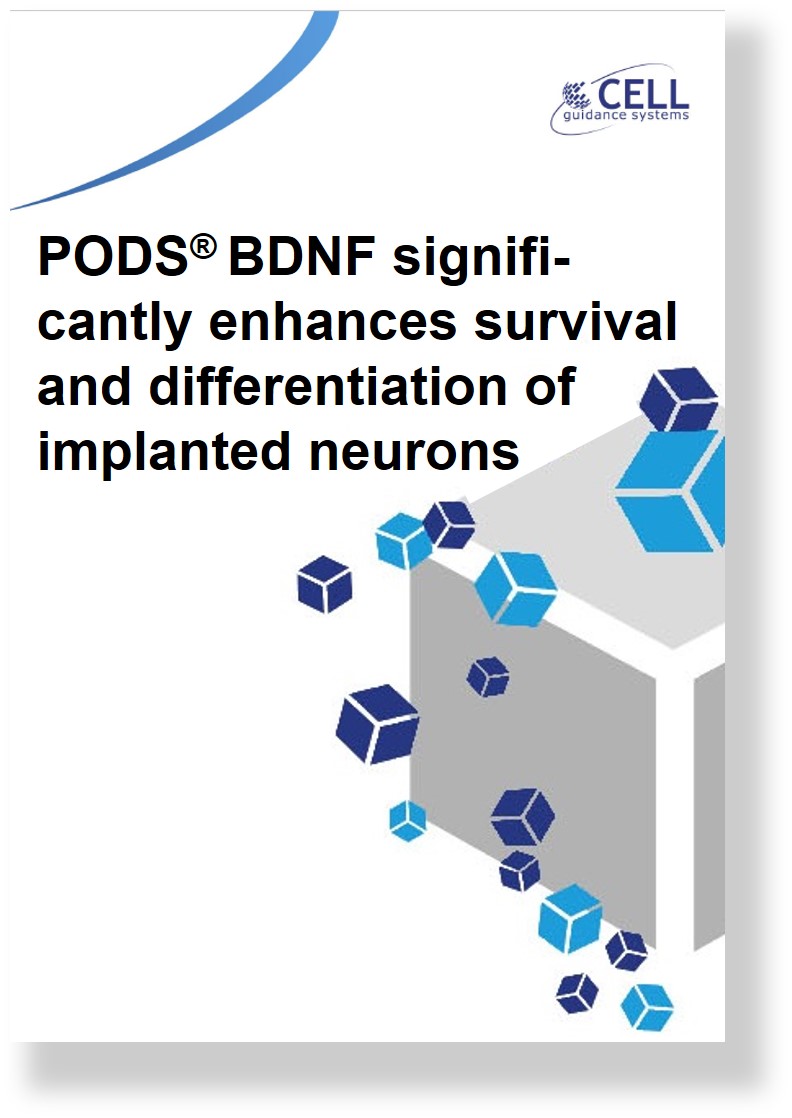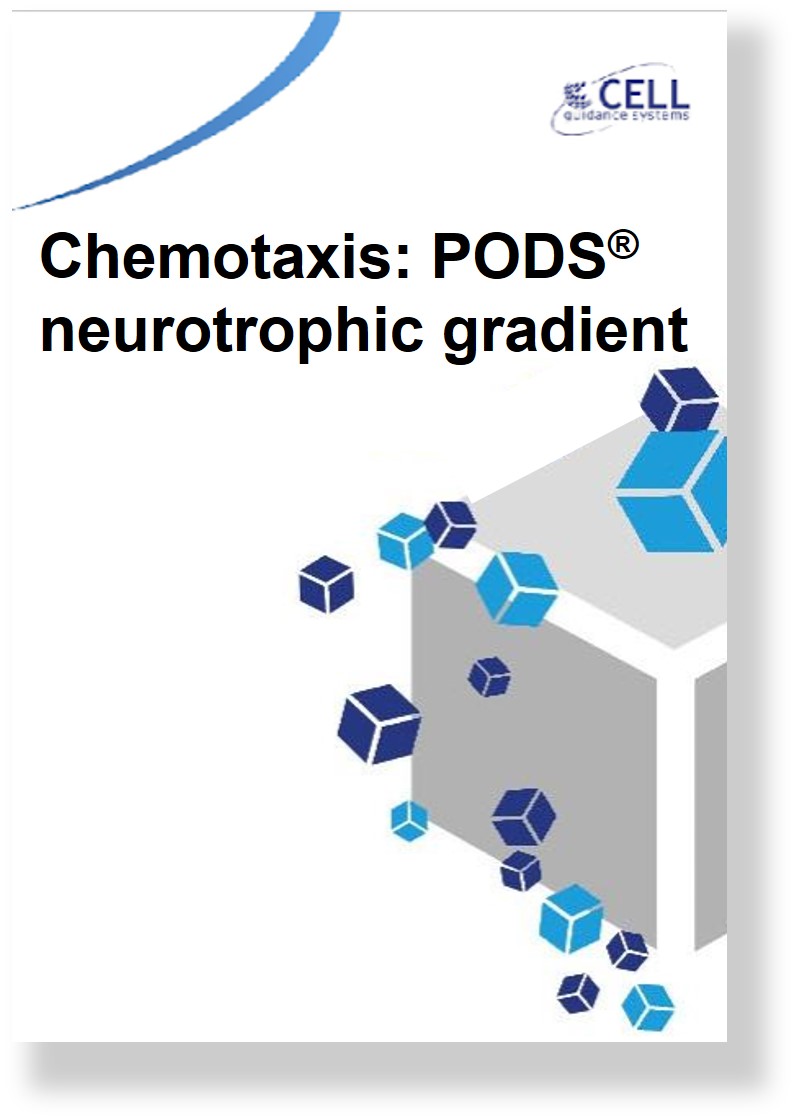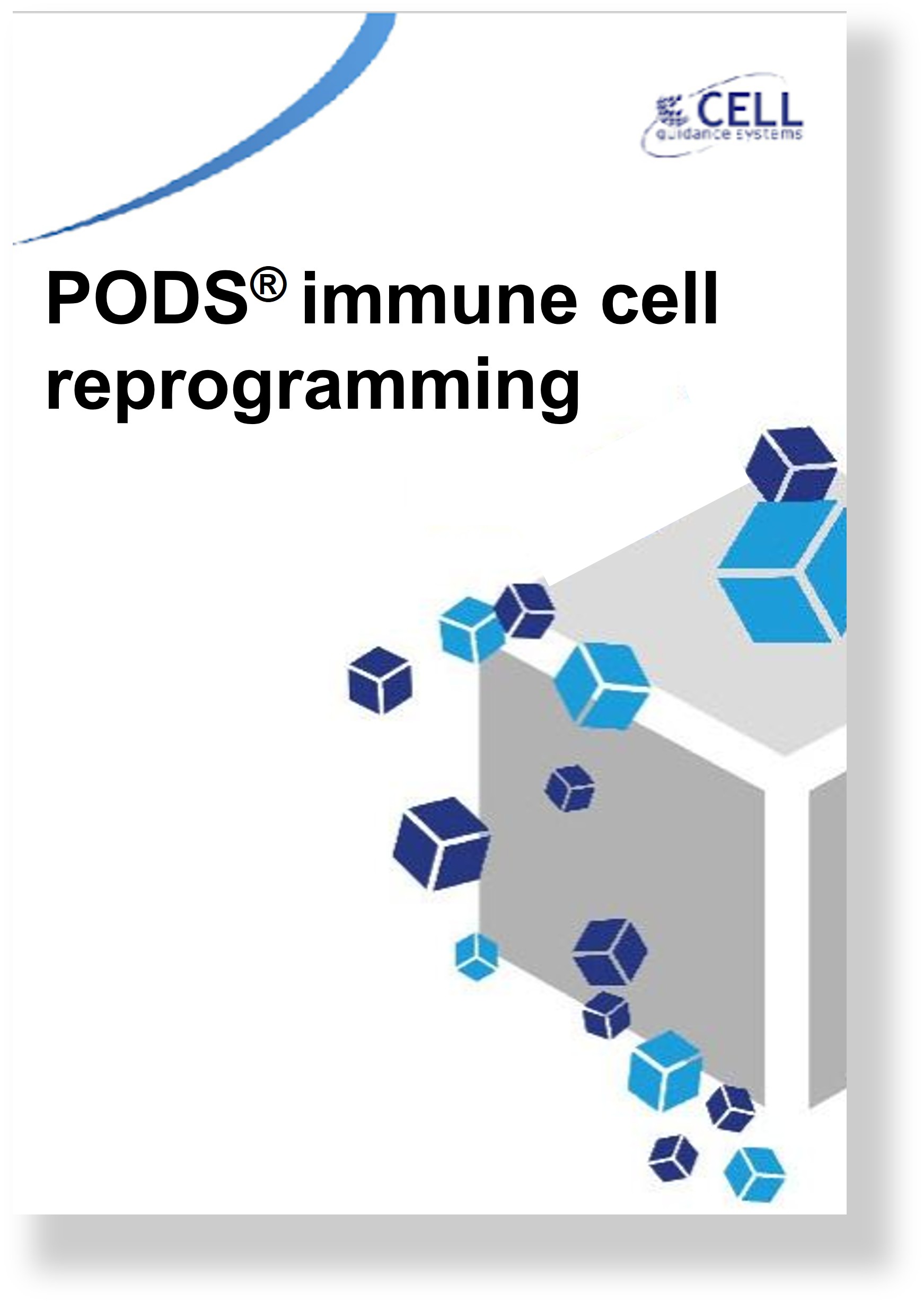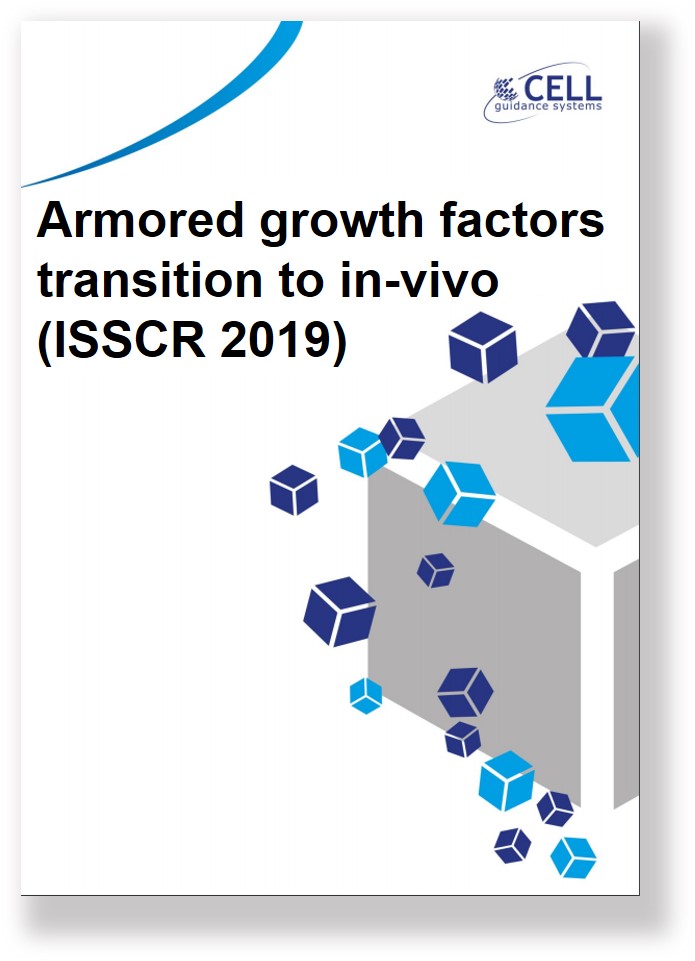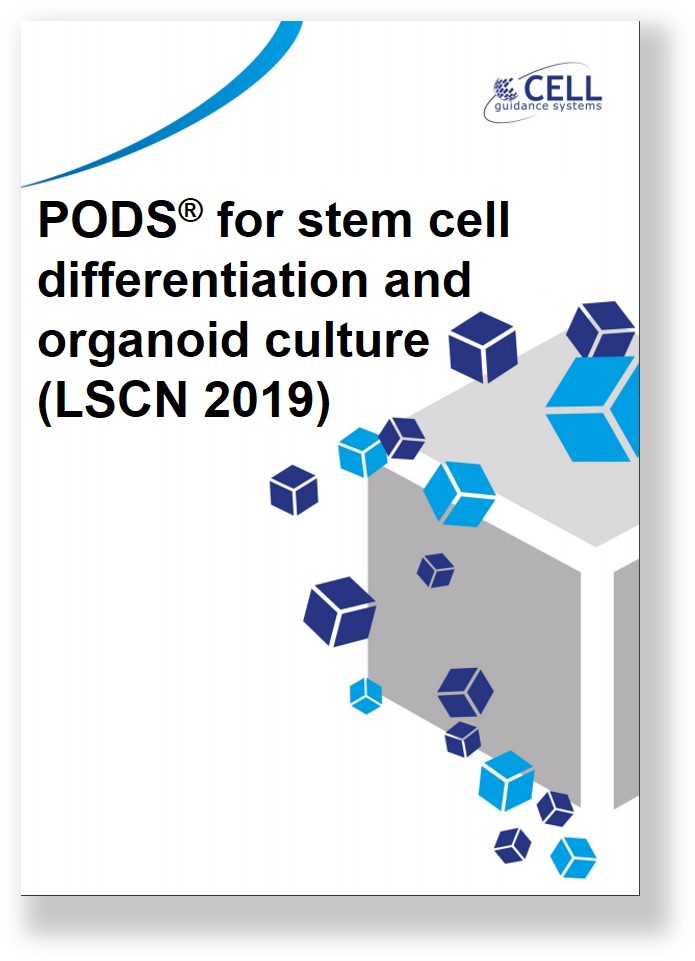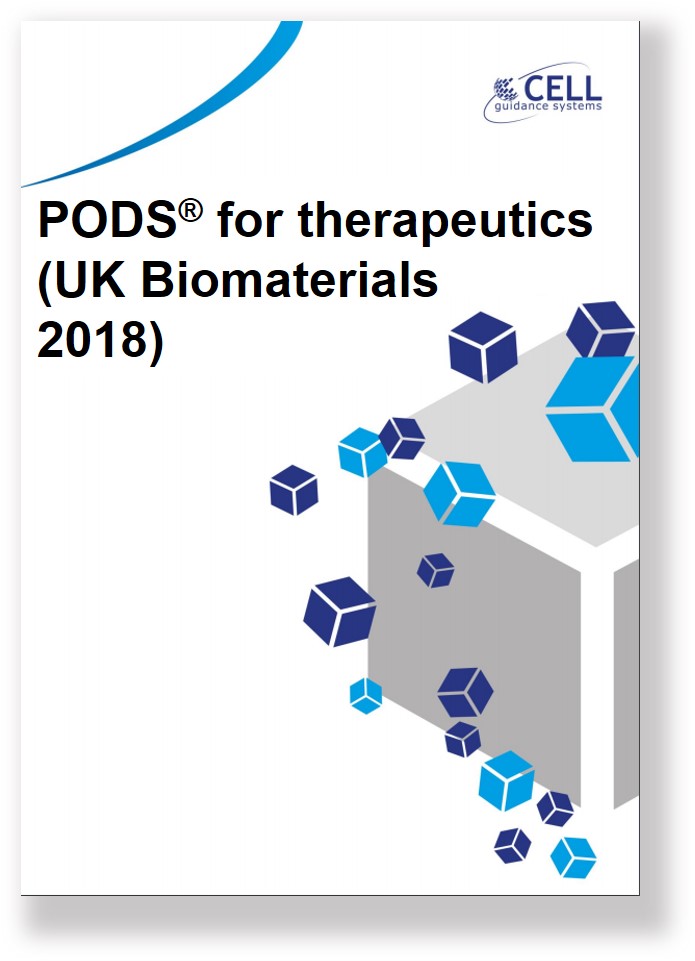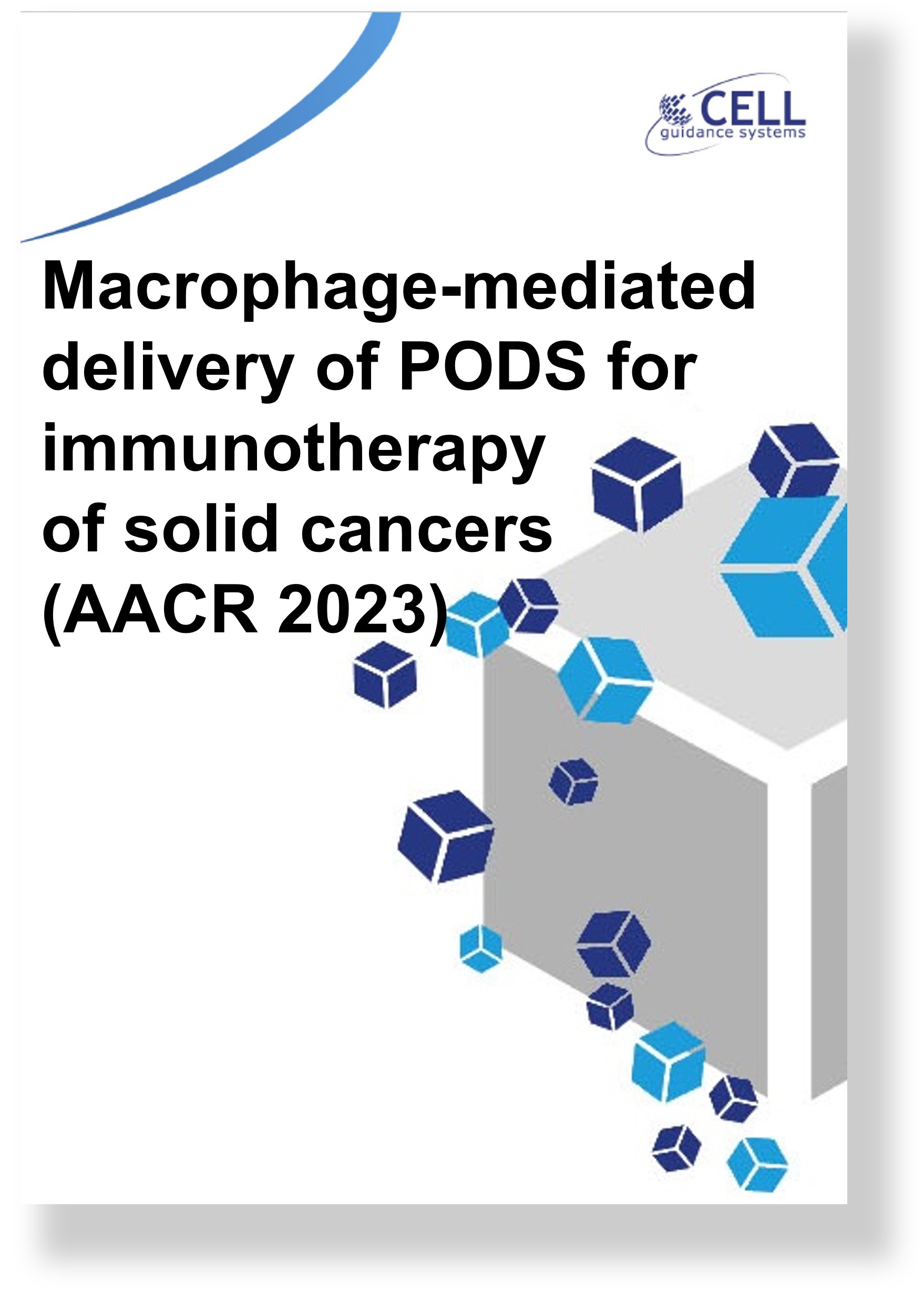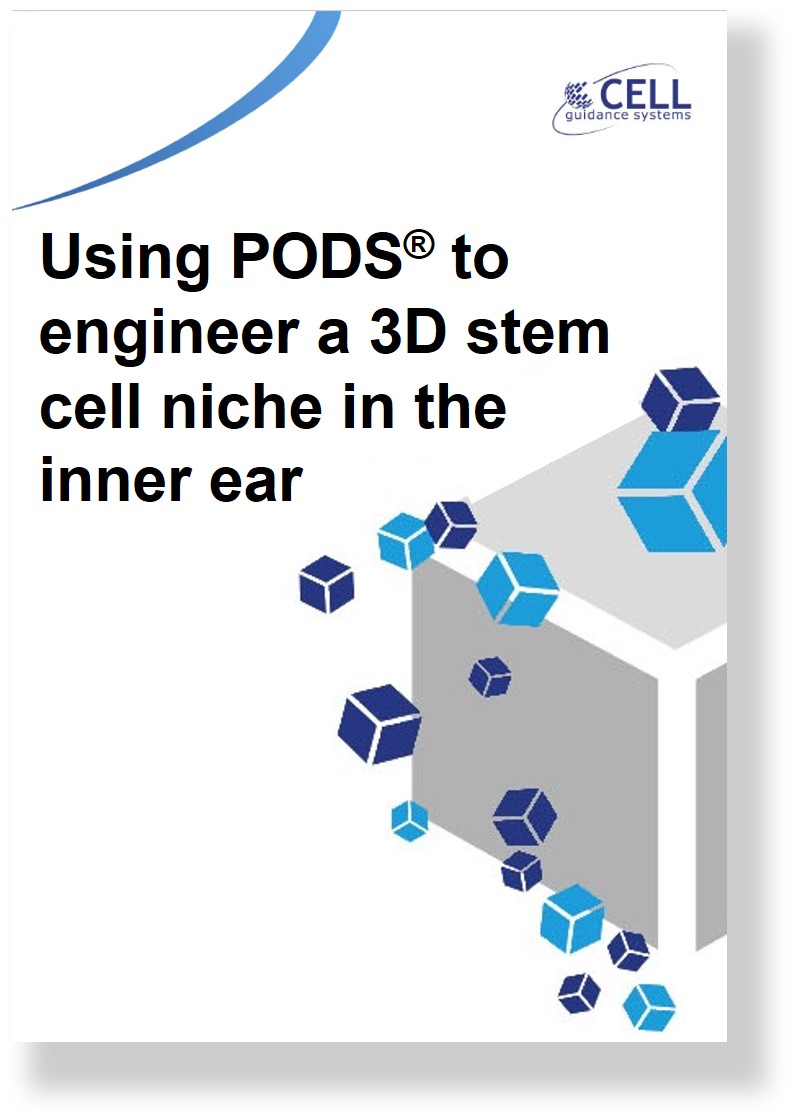PODS® Products
Support Literature
Technical Notes
Application Notes
Conference Posters
Highlighted Publications
Videos
PODS® protein crystals explained by Dr Christian Pernstich
Watch how protein gradients can be generated with PODS®
PODS® used in bioprinting
PODS® use for in vivo delivery of proteins
PODS® Drug Delivery to Cancer
Improving neuron differentiation outcome with slow-release growth factors
For technical support, please contact us by email at [email protected].
PODS® Peer-Reviewed Publications
In vivo Studies
Neuronal
- Jonathan R. Soucy, Julia Oswald, Emil Kriukov, Monichan Phay, John Masland, Christian Pernstich, and Petr Baranov (2025) Sustained Neurotrophic Factor Co-Treatment Enhances Donor and Host Retinal Ganglion Cell Survival in Mice. Translational Vision Science & Technology September 2025, Vol.14, 27.
- Jonathan R. Soucy, Levi Todd, Emil Kriukova, Monichan Phaya, Volha V. Malechkaa, John Dayron Riveraa, Thomas A. Rehc, and Petr Baranov. (2023) Controlling donor and newborn neuron migration and maturation in the eye through microenvironment engineering. PNAS 120 (46) e2302089120
- Chang H, Heuer R, Oleksijew A, Coots K, Roque C, Nella K, McGuire T, Matsuoka A. (2020). An engineered three-dimensional stem cell niche in the inner ear by applying a nanofibrillar cellulose hydrogel with a sustained-release neurotrophic factor delivery system. Acta Biomaterialia 111-127
Musculoskeletal
- Whitty C, Pernstich C, Marris C, McCaskie A, Jones M, Henson F. (2022) Sustained delivery of the bone morphogenetic proteins BMP-2 and BMP-7 for cartilage repair and regeneration in osteoarthritis. Osteoarthitis and Cartilage Open Vol 4 issue 1 https://doi.org/10.1016/j.ocarto.2022.100240
- Matsumoto G, Ueda T, Sugita Y, Kubo K, Mizoguchi M, Kotani E, Oda N, Kawamata S, Segami N, Mori H. (2015). Polyhedral microcrystals encapsulating bone morphogenetic protein 2 improve healing in the alveolar ridge. Journal of Biomaterials Applications 30(2):193-200.
- Matsumoto G, Ueda T, Shimoyama J, Ijiri H, Omi Y, Yube H, Sugita Y, Kubo K, Maeda H, Kinoshita Y, Arias DG, Shimabukuro J, Kotani E, Kawamata S, Mori H. (2012). Bone regeneration by polyhedral microcrystals from silkworm virus. Scientific Reports 2:935.
Cancer
- Michael H Jones, Nirk E Quispe Calla, Robert Smith, Callum Talbot-Cooper, Simon Rudge, Hiroyuki Kusano, Takayuki Shiomi, Yuichi Ishikawa, Hong Zeng, Jonathan Best (2023) BioRxiv (pre-print)
- Matsumoto G, Hirohata R, Hayashi K, Sugimoto Y, Kotani E, Shimabukuro J, Hirano T, Nakajima Y, Kawamata S, Mori H. (2014). Control of angiogenesis by VEGF and endostatin-encapsulated protein microcrystals and inhibition of tumor angiogenesis. Biomaterials 35(4):1326-33.
- Shimizu T, Ishikawa T, Iwai S, Ueki A, Sugihara E, Onishi N, Kuninaka S, Miyamoto T, Toyama Y, Ijiri H, Mori H, Matsuzaki Y, Yaguchi T, Nishio H, Kawakami Y, Ikeda Y, Saya H. (2012). Fibroblast growth factor-2 is an important factor that maintains cellular immaturity and contributes to aggressiveness of osteosarcoma. Molecular Cancer Research 10(3):454-68.
Cardviovascular
- Matsushima K, Suyama T, Takenaka C, Nishishita N, Ikeda K, Ikada Y, Sawa Y, Jakt LM, Mori H, Kawamata S. (2010). Secreted frizzled related protein 4 reduces fibrosis scar size and ameliorates cardiac function after ischemic injury. Tissue Engineering Part A 16(11):3329-41.
Immunology
- Derya Topuz Ata, Muattaz Hussain, Michael Jones, Jonathan Best, Martin Wiese and Katharine Christine Carter (2023) Immunisation with Transgenic L. tarentolae Expressing Gamma Glutamyl Cysteine Synthetase from Pathogenic Leishmania Species Protected against L. major and L. donovani Infection in a Murine Model. Microorganisms 2023, 11(5), 1322;
In vitro studies
Neuronal
- Hao Liu, Anna Puiggalí-Jou, Parth Chansoria, Jakub Janiak, Marcy Zenobi-Wong (2025) Filamented hydrogels as tunable conduits for guiding neurite outgrowth Materials Today Bio Volume 31, April 2025, 101471
- Krishma A. K. Parwana, Priyapreet Kaur Gill, Runyararo Njanike, Humphrey H. P. Yiu, Chris F. Adams, Divya Maitreyi Chari and Stuart Iain Jenkins. Investigating Internalization of Reporter-Protein-Functionalized Polyhedrin Particles by Brain Immune Cells. Materials 2024, 17(10), 2330;
- Benjamin Norton, Analia Quirk, and Akihiro J. Matsuoka (2024) Unravelling the Mechanisms of Vestibular Neuron Formation from Human Induced Pluripotent Stem Cells Tissue Engineering Part A
- Kevin T. Nella, Benjamin M. Norton, Hsiang-Tsun Chang, Rachel A. Heuer, Christian B. Roque, Akihiro J. Matsuoka (2022) Bridging the electrode–neuron gap: finite element modeling of in vitro neurotrophin gradients to optimize neuroelectronic interfaces in the inner ear. Acta Biomaterialia Volume 151, 1 October 2022, Pages 360-37
- Matsuzaki Y, Maruta R, Takaki K, Kotani E, Kato Y, Yoshimura R, Endo Y, Whitty C, Pernstich C, Gandhi R, Jones M, Mori H. (2019). Sustained Neurotrophin Release from Protein Nanoparticles Mediated by Matrix Metalloproteinases Induces the Alignment and Differentiation of Nerve Cells. Biomolecules 20;9(10)
Cardiovascular
- Sushma Priya, Ashleigh S. Boyd, Abril Torres-Bautista, Prasad Sawadkar, Ash Mosahebi, Subha Narayan Rath, Deepak M. Kalaskar. Accelerating vascular graft development: Adipose-derived stem cells and PODS® (Polyhedrin delivery system with tissue-specific growth factors) – Enhanced 3D bioprinting for functional blood vessels. Chemical Engineering Journal Volume 494, 15 August 2024, 152934120 (46) e230208912
- Matsumoto G, Hirohata R, Hayashi K, Sugimoto Y, Kotani E, Shimabukuro J, Hirano T, Nakajima Y, Kawamata S, Mori H. (2014). Control of angiogenesis by VEGF and endostatin-encapsulated protein microcrystals and inhibition of tumor angiogenesis. Biomaterials 35(4):1326-33.
Immune
- Wendler A, James N, Jones MH, Pernstich C (2021) Phagocytosed Polyhedrin-Cytokine Cocrystal Nanoparticles Provide Sustained Secretion of Bioactive Cytokines from Macrophages BioDesign Research, vol. 2021, Article ID 9816485, 12 pages, 2021. https://doi.org/10.34133/2021/9816485
- Kotani E, Muto S, Ijiri H, Mori H. (2015). Bombyx mori nucleopolyhedrovirus nucleic acid binding proteins BRO-B and BRO-E associate with host T-cell intracellular antigen 1 homologue BmTRN-1 to influence protein synthesis during infection. Journal of General Virology 96(Pt 7):1947-56.
- Krishma A. K. Parwana, Priyapreet Kaur Gill, Runyararo Njanike ,Humphrey H. P. Yiu, Chris F. Adams, Divya Maitreyi Chari and Stuart Iain Jenkins. Investigating Internalization of Reporter-Protein-Functionalized Polyhedrin Particles by Brain Immune Cells. Materials 2024, 17(10), 2330;
Skin
- Maruta R, Takaki K, Yamaji Y, Sezutsu H, Mori H and Kotani E (2020) Effects of transgenic silk materials that incorporate FGFâ€7 protein microcrystals on the proliferation and differentiation of human keratinocytes. FASEB Bioadv 2(12): 734-744
Pluripotent
- Hasegawa Y, Tang D, Takahashi N, Hayashizaki Y, Forrest AR; FANTOM Consortium, Suzuki H. (2014). CCL2 enhances pluripotency of human induced pluripotent stem cells by activating hypoxia related genes. Scientific Reports 24;4:5228.
- Nishishita N, Ijiri H, Takenaka C, Kobayashi K, Goto K, Kotani E, Itoh T, Mori H, Kawamata S. (2011). The use of leukemia inhibitory factor immobilized on virus-derived polyhedra to support the proliferation of mouse embryonic and induced pluripotent stem cells. Biomaterials 32(14):3555-63.
3D and 3D Printing
- Ioannis A. Tsigkos, Penelope M. Tsimbouri, Manuel Salmeron-Sanchez, Matthew J. Dalby (2025). Sustained growth factor release driven cellular therapy indicates enhanced potential for regeneration upon mechanical injury, Biomaterials Advances, Volume 177,2143
- Hao Liu, Anna Puiggalí-Jou, Parth Chansoria, Jakub Janiak, Marcy Zenobi-Wong (2025) Filamented hydrogels as tunable conduits for guiding neurite outgrowth Materials Today Bio Volume 31, April 2025, 10147
- Sushma Priya, Ashleigh S. Boyd, Abril Torres-Bautista, Prasad Sawadkar, Ash Mosahebi, Subha Narayan Rath, Deepak M. Kalaskar. Accelerating vascular graft development: Adipose-derived stem cells and PODS® (Polyhedrin delivery system with tissue-specific growth factors) – Enhanced 3D bioprinting for functional blood vessels. Chemical Engineering Journal Volume 494, 15 August 2024, 152934120 (46) e230208912
- Hannah C. Lamont, Abigail L. Wright, Kate Devries, Kerime E. Okur, Michael Jones, Imran Masood, Lisa J. Hill, Showan N. Nazhat, Liam M. Grover, Alicia J. El Haj, Anthony D. Metcalfe (2024) Trabecular meshwork cell differentiation in response to collagen and TGFβ-2 spatial interactions Acta Biomaterialia Volume 189, Pages 217-231
- Chang H, Heuer R, Oleksijew A, Coots K, Roque C, Nella K, McGuire T, Matsuoka A. (2020). An engineered three-dimensional stem cell niche in the inner ear by applying a nanofibrillar cellulose hydrogel with a sustained-release neurotrophic factor delivery system. Acta Biomaterialia 111-127
- Maruta R, Takaki K, Yamaji Y, Sezutsu H, Mori H and Kotani E (2020) Effects of transgenic silk materials that incorporate FGF7 protein microcrystals on the proliferation and differentiation of human keratinocytes. FASEB Bioadv 2(12): 734-7
Mechanistic
- Negishi H, Abe S, Yamashita K, Hirata K, Niwase K, Boudes M, Coulibaly F, Mori H, Ueno T. (2018). Supramolecular protein cages constructed from a crystalline protein matrix. Chemical Communications 20;54(16):1988-1991.
- Abe S, Atsumi K, Yamashita K Hirata K, Mori H, Ueno T. (2018). Structure of in cell protein crystals containing organometallic complexes. Physical Chemistry Chemical Physics 31;20(5):2986-2989.
- Abe S, Tabe H, Ijiri H, Yamashita K, Hirata K, Atsumi K, Shimoi T, Akai M, Mori H, Kitagawa S, Ueno T. (2017). Crystal Engineering of Self-Assembled Porous Protein Materials in Living Cells. ACS Nano 28;11(3):2410-2419.
- Tabe H, Shimoi T, Boudes M, Abe S, Coulibaly F, Kitagawa S, Mori H, Ueno T. (2016). Photoactivatable CO release from engineered protein crystals to modulate NF-κB activation. Chemical Communications 25;52(24):4545-8.
- Kotani E, Yamamoto N, Kobayashi I, Uchino K, Muto S, Ijiri H, Shimabukuro J, Tamura T, Sezutsu H, Mori H. (2015). Cell proliferation by silk gut incorporating FGF-2 protein microcrystals. Scientific Reports 8;5:11051.
- Tabe H, Shmoi T, Fujita K, Abe S, Ijiri H, Tsujimoto M, Kuchimaru T, Kizaka-Kondo S, Mori H, Kitagawa S, Uneo T (2015) Design of a CO-releasing Extracellular Scaffold Using in Vivo Protein Crystals. Chemistry Letters 44(3):342-344
- Abe S, Ijiri H, Negishi H, Yamanaka H, Sasaki K, Hirata K, Mori H, Ueno T. (2015). Design of Enzyme-Encapsulated Protein Containers by In Vivo Crystal Engineering. Advanced Materials 22;27(48):7951-6.
- Mori H. (2012). Editorial comment from Dr Mori to recent topics related to nephrogenic systemic fibrosis associated with gadolinium-based contrast agents. International Journal of Urology 19(9):812.
- Chiu E, Coulibaly F, Metcalf P. (2012). Insect virus polyhedra, infectious protein crystals that contain virus particles. Current Opinion in Structural Biology 22(2):234-40.
- Ji X, Sutton G, Evans G, Axford D, Owen R, Stuart DI. (2010). How baculovirus polyhedra fit square pegs into round holes to robustly package viruses. The EMBO Journal 20;29(2):505-14.
- Coulibaly F, Chevalier C, Delmas B, Rey FA. (2010). Crystal structure of an Aquabirnavirus particle: insights into antigenic diversity and virulence determinism. Journal of Virology 84(4):1792-9.
- Ijiri H, Coulibaly F, Nishimura G, Nakai D, Chiu E, Takenaka C, Ikeda K, Nakazawa H, Hamada N, Kotani E, Metcalf P, Kawamata S, Mori H. (2009). Structure-based targeting of bioactive proteins into cypovirus polyhedra and application to immobilized cytokines for mammalian cell culture. Biomaterials 30(26):4297-308.
- Coulibaly F, Chiu E, Gutmann S, Rajendran C, Haebel PW, Ikeda K, Mori H, Ward VK, Schulze-Briese C, Metcalf P. (2009). The atomic structure of baculovirus polyhedra reveals the independent emergence of infectious crystals in DNA and RNA viruses. Proceedings of the National Academy of Sciences of the United States of America 29;106(52):22205-10.
- Tanaka H, Matsuki H, Furukawa S, Sagisaka A, Kotani E, Mori H, Yamakawa M. (2007). Identification and functional analysis of Relish homologs in the silkworm, Bombyx mori. Biochimica et Biophysica Acta 1769(9-10):559-68.
- Mori H, Shukunami C, Furuyama A, Notsu H, Nishizaki Y, Hiraki Y. (2007). Immobilization of bioactive fibroblast growth factor-2 into cubic proteinous microcrystals (Bombyx mori cypovirus polyhedra) that are insoluble in a physiological cellular environment. Journal of Biological Chemistry 8;282(23):17289-96.
- Coulibaly F, Chiu E, Ikeda K, Gutmann S, Haebel PW, Schulze-Briese C, Mori H, Metcalf P. (2007). The molecular organization of cypovirus polyhedra. Nature 1;446(7131):97-101.
- Ikeda K, Nakazawa H, Shimo-Oka A, Ishio K, Miyata S, Hosokawa Y, Matsumura S, Masuhara H, Belloncik S, Alain R, Goshima N, Nomura N, Morigaki K, Kawai A, Kuroita T, Kawakami B, Endo Y, Mori H. (2006). Immobilization of diverse foreign proteins in viral polyhedra and potential application for protein microarrays. Proteomics 6(1):54-66.
Appendix: Application Note Abstracts
1. Retinal ganglion organoid culture
PODS® proteins release their encapsulated growth factors (GFs) over long periods of time. This sustained-release makes them ideal for cell cultures that require the prolonged presence of active growth factors in the culture medium, such as spheroid and organoid cultures. Mouse embryonic stem cells were differentiated into retinal ganglion cell (RGC) organoids. In the final stage of the differentiation, RGC organoid cultures were maintained with PODS BDNF and PODS GDNF which act as neuro-protectants. After 10 days, the yield of RGCs and their individual subtypes from cultured organoids was quantified using fluorescence-activated cell sorting (FACS). A single application of PODS crystals was effective throughout the 10-day culture period, achieving yields comparable to standard recombinant BDNF and GDNF which require a further four additions of growth factor over the period. Additionally, organoids cultured with PODS proteins presented with a healthier phenotype, most likely due to reduced handling disturbance and the consistent GF levels achieved by the sustained release from PODS® crystals.
2. Bone regeneration
PODS® crystals release their encapsulated cargo protein over long periods of time. This makes them ideal for delivery of therapeutic proteins in tissue regeneration. The utility of PODS crystals for therapeutic protein delivery was assessed in an in vivo bone remodeling study. A 9 mm disc of rat calvaria bone was removed and a single application of either PODS BMP-2, PODS Empty, or standard rhBMP-2 was implanted. Subsequently, levels of bone regeneration were assessed firstly by x-ray radiography, in intervals for up to 15 weeks, and secondly by bone density measurement in µ-CT after 15 weeks. A single application of PODS BMP-2 is effective in vivo and delivers therapeutic proteins continuously for several weeks as demonstrated by vastly improved bone regeneration levels compared to no intervention or standard rhBMP-2. Additionally, PODS BMP-2 is more efficacious at lower doses as opposed to treatments with standard rhBMP-2.
3. Achieving localized effects
PODS® crystals are durable protein nanoparticles that encapsulate cargo protein such as growth factors. These nanoparticles retain their crystalline structure and integrity in conventional cell culture medium for several weeks while steadily releasing their cargo protein. Additionally, PODS crystals adhere readily on tissue culture plastic, enabling the creation of localized deposits. This allows for generating growth factor gradients on any standard tissue culture dish quickly and easily without the need for specialized equipment. PODS BMP-2, capable of stimulating extracellular matrix (ECM) production and calcium incorporation in ATDC5 cells, were positioned in high densities in confined areas on standard 12-well plates. ATDC5 cells were seeded homogeneously across each well and cultured for 9 days. Cells were fixed and subsequently stained to visualize either ECM production or calcium incorporation. Results showed that only cells in the immediate vicinity of the PODS® BMP-2 crystal deposits were stained positive, demonstrating the successful generation of a BMP-2 gradient.
4. Modulating release rates
In contrast to standard soluble growth factor (GF), where 100% of the supplemented GF is available at the start and then diminishes rapidly, PODS nanoparticles initially encapsulate all GF proteins, from which active GF is released over time. If a certain amount of GF is required from the beginning of cell culture, pre-incubating PODS crystals with culture medium can modulate the release from PODS and so create a cache of immediately available GF. The effect of pre-incubating PODS crystals on release rates was demonstrated with TF-1 cells, which are dependent on the growth factor GM-CSF. PODS GM-CSF crystals at a range of concentrations were deposited in duplicate onto a 96-well plate. One replicate series was then pre-incubated at 37°C with serum-containing culture medium while the other replicate series was left dry. After 24 h, TF-1 cells were seeded onto both replicate series and incubated for a further 5 days. Final cell numbers demonstrated that pre-incubating PODS nanoparticles increased stimulation of proliferation by up to 100% and outcompeted standard soluble rhGM-CSF.
5. Tips on generating even surface distribution
PODS® are solid nanoparticles and composed entirely of crystalline protein. With a median size of 2-3 µm, they sink to the bottom of a vessel in PBS or commonly used tissue culture medium. Furthermore, PODS crystals adhere readily to standard tissue culture plastic such as microplate surfaces and tissue culture flasks. Uniformly distributed monolayers of PODS proteins in microplates can easily be achieved using a centrifuge with plate rotor. Crystal densities of up to 1.4x106 PODS/cm2 will readily adhere to TC surfaces as a well-spaced out single layer. Culture medium changes can be performed by simply aspirating conditioned medium as usual without significant loss of PODS crystals. When attaching PODS proteins as a monolayer, they will release growth factor evenly across the well.
6. Enzymatic cell detachment with minimal carryover of PODS® crystals
It is sometimes necessary to remove growth factors from a culture system. Therefore, it is important to separate cells from PODS® which provide sustained growth factors release. This can be achieved in one of two ways. Firstly, by placing the PODS® crystals in a device that can be removed, such as a transwell insert. Secondly, by removing the cells during passaging. Enzyme-based dissociation buffers are commonly used for detaching a wide range of adherent mammalian cells. Dissociated cells are then used either for regular propagation (passaging) or subsequent downstream applications, where cells need to be detached from cell culture surface material for analysis. Therefore, detaching cells without dislodging adherent PODS® crystals to prevent carry-over is an important step in the experimental workflow. Following treatment with TrypLE, a modified trypsin detachment buffer, the adherence of PODS® crystals to plastics was assessed by first attaching PODS® eGFP to cell culture vessels and then employing a standard cell dissociation protocol.
7. Configuring culture systems to maintain PODS® crystals separate from cells
In some cases, a physical barrier between PODS® and cells may be desirable as cells are either (1) affected by contact inhibition; or (2) exhibit phagocytic properties; or (3) require a rapid sequential change of growth factors, as, for example, in differentiation protocols. The utility of cell culture inserts and hydrogels to keep PODS® and cells separated during culture in multi-well plates are described and demonstrated in two cell proliferation assays.
8. PODS® hBDNF crystals generate superior otic neuronal cell differentiation in 2D and 3D culture
In vitro culture systems can be utilized to study and model a suitable stem cell niche to promote neuronal differentiation. To enhance late stage in vitro neuronal differentiation of hESC-derived ONP spheroids, PODS® human brain neurotrophic growth factor (hBDNF) crystals, providing a sustained release delivery system, were used in combination with a nanofibrillar cellulose hydrogel.
9. PODS® hBDNF significantly enhances survival and differentiation of implanted neurons
The harsh, nutrient-deprived environment of the cochlea is a major challenge for survival of implanted cells. To promote the in vivo survival and neuronal differentiation of transplanted human Embryonic Stem Cell (hESC)-derived Otic Neuronal Progenitors (ONPs), PODS® hBDNF crystals were utilized as a long-term neurotrophic growth factor delivery system. Sustained hBDNF release from a single dose of PODS® hBDNF enhanced survival and neuronal differentiation of ONP spheroids towards otic neuronal lineages. Furthermore, PODS® hBDNF efficiently promoted neurite extension towards the bony wall of the cochlea during a 90-day post-transplantation period.
10. Sustained growth factor release using PODS® in long term cell culture
The data presented here demonstrates the ability of PODS® crystals to provide sustained levels of growth factor from a single dose, with detectable growth factor available for at least 9 weeks following initial application. With PODS®, media exchanges can be reduced to once a week in long term experiments without requiring growth factor replacement. Furthermore, including hydrogels in 3D culture systems can modulate growth factor release rates; when PODS® are in contact with both collagen and alginate gels, high growth factor levels are sustained for a longer period of time than with media only.
11. Growth factor release from PODS® crystals in serum-free medium
PODS® are microcrystalline depots which can release a constant supply of bioactive growth factors to cells. This process is dynamic and requires the presence of proteases to degrade the protein crystal lattice to release the growth factor. The proteases can originate from the cells (that need the growth factor) or can be derived from components of the cell culture system, such as added serum or matrix protein coatings e.g. collagen. Specifically, matrix metalloproteinases have been found to release protein cargo from PODS® crystals. To measure the effect of cell-generated proteases on the release of PODS® cargo growth factors, serum-free conditioned media, containing proteases released from cell lines, was incubated with PODS® crystals. ELISA was used to measure the amount of free growth factor released. We demonstrate that the majority of cell lines tested achieve sufficient release of growth factor to generate a biological effect. The proliferative effect exceeded that achieved by conventional growth factors even when used at high levels.
PODS® Poster Abstracts
1. Armored growth factors transition from 2D and 3D cultures to in-vivo use (ISSCR 2019)
Stem cell culture and differentiation protocols are challenging and generally require a significant amount of time and reagents. One of the main issues is the instability and relatively short half-live of growth factors, which limit their use both in the lab and for transitioning into the clinic. In collaboration with Kyoto Institute of Technology, we developed a novel sustained-release technology which encapsulates growth factors in a protein shell, protecting and preserving their function. PODS (POlyhedrin Delivery System) nanodevices are highly stable and degrade slowly, resulting in a steady release of cargo protein over several weeks. A true platform technology, PODS nanodevices can be applied in different culture systems, in-vitro as well as in-vivo.
2. Sustained release growth factors for stem cell differentiation and organoid culture (LSCN 2019)
Stem cell culture and differentiation protocols are challenging and generally require a significant amount of time and reagents. One of the main issues is instability and the relatively short half-lives of growth factors (GF), which limit their use both in the lab and for transitioning into the clinic. In collaboration with Kyoto Institute of Technology, we developed a novel sustained release growth factor technology which encapsulates growth factors in a protein shell, protecting and preserving their function. PODS (POlyhedrin Delivery System) crystals are produced in insect cells by co-expression of polyhedrin protein and a cargo protein. Highly stable, PODS crystals degrade slowly, resulting in a steady release of cargo protein over several weeks. Here, we outline how PODS crystals can be applied to improve 3D organoid differentiation protocol.
3. Armoured growth factors for tissue engineering (UK Biomaterials 2019)
The inherent instability of recombinant growth factors (GFs), with typical half-lives ranging from minutes to hours, limits their utility in the lab and the clinic. Efficacy may be improved by encapsulation within biomaterials to provide sustained bioavailability over a longer time. However, current delivery systems are limited by protein denaturation and burst release. Refinement of delivery systems to provide sustained release and improved retention may provide therapeutic efficacy at lower doses, improving cost-effectiveness and preventing adverse side effects. PODS (POlyhedrin Delivery System) is a highly durable, crystalline product which encases a GF of interest within polyhedrin protein. The stability of PODS means that crystals degrade slowly, resulting in a steady release of intact, native and functional cargo protein, over several weeks at physiologically-relevant levels.
4. Sustained release of growth factors for therapeutics (UK Biomaterials 2018)
The inherent instability of recombinant growth factors, with typical half-lives ranging from minutes to hours, limits their utility both in the lab and during the transition to the clinic. Furthermore, it is difficult to achieve gradients using standard recombinant growth factors without using special culturing chambers. PODS (POlyhedrin Delivery System) is a highly durable, crystalline product which encases a protein of interest within a polyhedrin protein. This technology exploits the Bombyx mori cypovirus, which encases its mature virion within a polyhedrin protein crystal in order to increase its stability. This stability means that PODS crystals degrade slowly, resulting in a steady release of cargo protein over several weeks. The sustained release mechanism of PODS growth factors can be applied in many ways, from cultivating organoid cultures to functionalising surfaces and scaffolds. We outline how PODS crystals were used to establish a local neurotrophic growth factor gradient. Furthermore, we also demonstrate the therapeutic potential of PODS crystals embedded in a collagen scaffold, using a small animal model of bone repair.
5. A novel approach to protein instability (Milner 2018)
Recombinant growth factors are inherently unstable, with short half-lives limiting their utility in the lab and clinic. PODS (POlyhedrin Delivery System) are produced in cultured insect cells by co-expression of polyhedrin protein with a cargo protein. This encases and protects the protein of interest within a polyhedrin crystal. PODS crystals contain intact, native, and functional protein, are highly durable and extremely stable in storage, and degrade slowly over several weeks to steadily release active cargo protein. The sustained release mechanism of PODS growth factors can be used in many ways, e.g., to cultivate organoid cultures, create growth factor gradients or to functionalise surfaces and scaffolds.
6. Macrophage-mediated delivery of protein drug depots for immunotherapy of solid cancers (AACR 2023)
Drug delivery mechanisms better able to target protein drugs to the disease site and provide localized, sustained release have the potential to transform therapeutic standards. PODS (POlyhedrin Delivery System) are natural-mimetic, micron-scale protein co-crystals engineered to incorporate a protein cargo that can be sustainably released under the action of resident proteases. PODS are efficiently taken up by phagocytic cells with the cargo protein subsequently released in a bioactive form. Since blood-circulating phagocytic cells, including monocytes, are actively recruited into diseased and inflamed tissue we postulated that monocyte/macrophage-mediated PODS delivery could improve the pharmacodynamics and pharmacokinetics of cancer therapeutic proteins. This study provides proof-of-concept for the utility of intravenously administered PODS to provide a generalised and widely applicable mechanism to effectively deliver protein drugs for the therapy of cancer.
If you have any questions, please contact us by email at [email protected].




